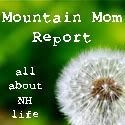EWG Sunscreen Guide
 Yes, it's true! There's sun in New England, finally! And that means it times to break out the sunscreen. Did you know that there is no federal government rules regarding the safety and effectiveness of sunscreen?
Yes, it's true! There's sun in New England, finally! And that means it times to break out the sunscreen. Did you know that there is no federal government rules regarding the safety and effectiveness of sunscreen?
That's where the Environmental Working Group comes in. They have evaluated over 1600 sunscreens, lip balms, and daily moisturizers and tested them for sun damage and what, if any, hazardous chemicals are part of the ingredients. They then have amassed a database for you so you can choose the safest and most effective product for you and your family!
Sunscreen companies are slow to change, there are a few bright spots in this years guide:
- The number of sunscreens containing UVA filters doubled, to 70 percent of 2,000-plus products analyzed.
- The number of sunscreens using oxybenzone, an endocrine-disrupting chemical, dropped by 19 percent.
- Two of five sunscreens on the market in 2009 are judged to be safe and effective. Last year, just one in five sunscreens passed both the “safe” and “effective” tests.
Best Easy-To-Find Sunscreens
- California Baby - any sunscreen
- Mustela - “Sun Cream” or “Sun Lotion, Bebe”
- Mission Skincare - “Face Stick”
- Neutrogena - “Pure & Free” or “Sensitive Skin”
- Blue Lizard - “Face”, “Baby”, or “Sensitive”
- Jason Natural or Earth’s Best - “Mineral Based”
- Solar Sense - “Clear Zinc Sport Stick”
- CVS - “Sport Sunstick”
- Coppertone Water BABIES - “Pure & Simple”
- Protect kids! Everyone is at risk from sun damage, but children are more sensitive to heat stroke and have higher risk for skin cancer later in life when they get too much sun. Keep children under 6 months out of direct sun.
- Avoid midday sun when intensity peaks. Summer sun is more intense between 10 and 4, also at high altitudes and in the tropics.
- Seek shade or bring your own. Cover up with a shirt, hat, and UV-protective sunglasses. Remember that invisible rays can reflect up toward you from the ground, so you may still need sunscreen if you wear a hat.
- Slop on sunscreen and reapply often. Put it on before you go out in the sun. Sunscreen washes off in water and can break down in the sun – reapply often. Wear daily on skin not covered by clothing.
- Using bug repellent? Apply it at least 15 minutes after sunscreen to cut down on the pesticide soaking through the skin.
- Buy new sunscreen every year. Start with our top picks list at cosmeticsdatabase.com/sunscreens.
- Wear SPF lip balm to protect against sun damage.
- Use a daily moisturizer with SPF when you’re indoors near bright windows. UVA penetrates windows and damages unprotected skin.













3 comments:
Great info on sunscreens. Your readers may also be interestd in these articles from Mercola.com
http://articles.mercola.com/sites/articles/archive/2004/05/26/summer-sun.aspx
Wow! I didn't realize there was so much to be known about sunscreen!
Good info. As a former beach dweller I have one tip to add. Overcast days can produce the worst burns. The sun does not need to be shining brightly for the harmful rays to get you and people are much less likely to apply frequently. It's a good idea to always wear sunscreen and/or make-up with sunscreen.
Post a Comment